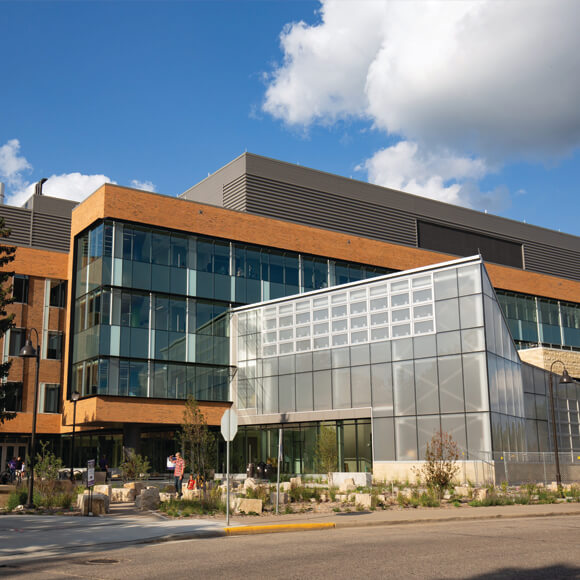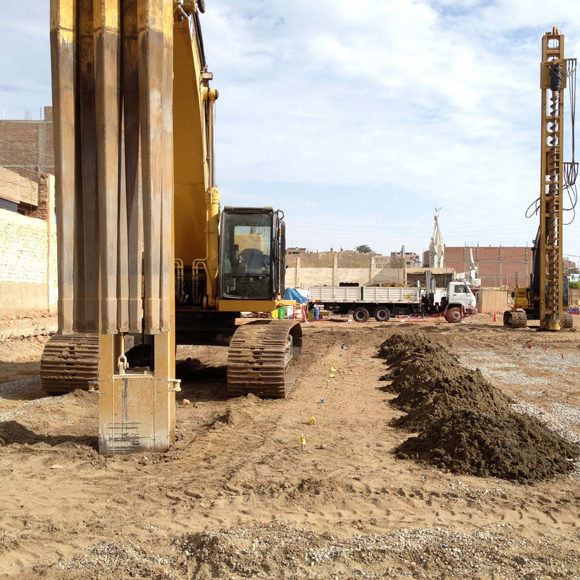.jpg?lang=en-US&ext=.jpg)
University of Wisconsin - Stevens Point Chemistry Building
Geopier Densipact® solution proves to be more cost-effective than traditional foundation support options
- Owner: University of Wisconsin
- General Contractor: Miron Construction
- Geotechnical Engineer: Nummelin Testing Services, Inc.
- Structural Engineer: HOK
The University of Wisconsin constructed a new 176,500 square foot Chemistry Biology building at the Stevens Point campus. The building houses the entire Chemistry Department and the molecular biology, human biology, and botany sections of the Biology Department. The building is four stories tall (not including a partial basement level) with column loads in the range of 250 to 1,200 kips.
The subsurface conditions at the project site generally consist of 4 to 5 feet of very loose to medium dense sand fill underlain by very loose to dense native clean sand. The native clean sand transitions from loose to dense at a depth of about 20 feet. Groundwater was encountered at a depth of about 10 feet below the proposed ground floor elevation.
The geotechnical engineer recommended supporting the proposed structure on a shallow foundation system (with a relatively low bearing capacity) after removal and replacement of the existing fill soils. Given the large column loads, a low bearing capacity solution was determined to be inefficient. Geopier proposed supporting the structure on soils improved with the Densipact® system, which allowed for bearing capacities up to 7,000 psf and post-construction settlements of 1 inch or less. The Geopier licensed installer constructed 214 Rammed Compaction Points (RCPs) in under 1 week and field-verified the densification/improvement of the soil using mechanical Cone Penetration Testing.

.jpg?lang=en-US&ext=.jpg?width=300)

